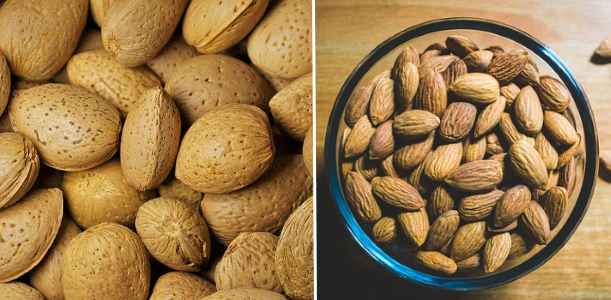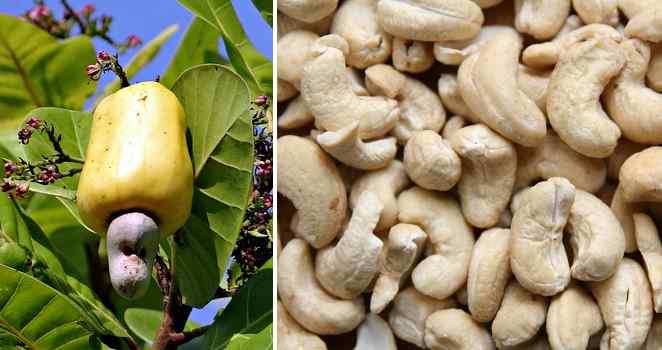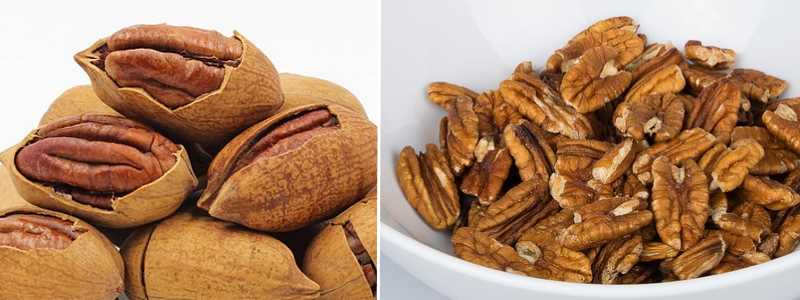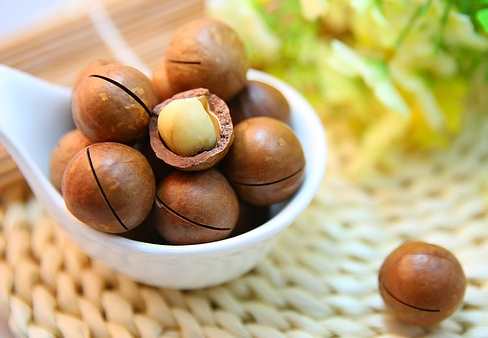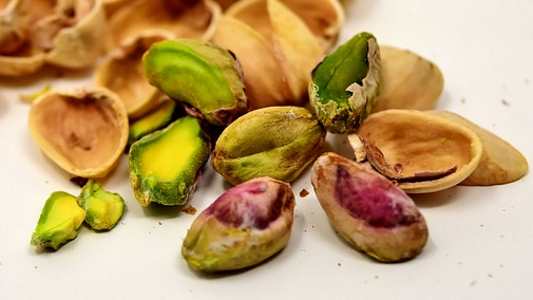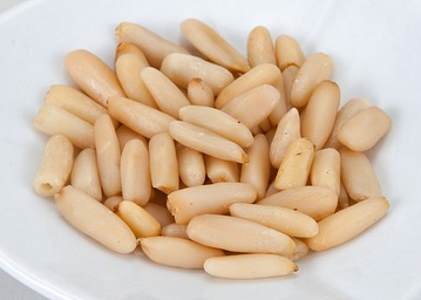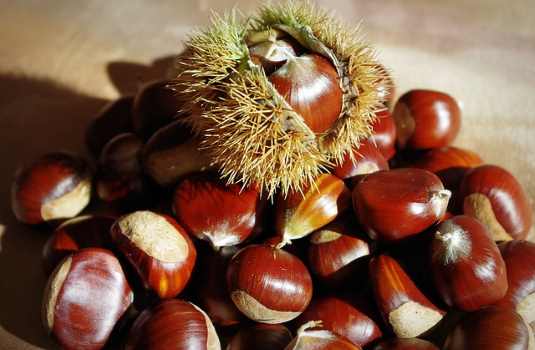Types of Nuts: Different Nut Varieties With Pictures and Names
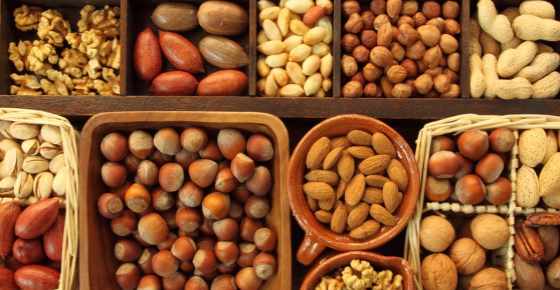
There are many kinds of edible nuts in the world and most of them are extremely healthy. Many types of nuts are rich sources of nutrients, fiber, protein, and healthy fats. Healthy nut varieties such as almonds, walnuts, macadamia nuts, and Brazil nuts have been linked to good cardiovascular health. Most varieties of healthy nuts contain antioxidants such as vitamin E that help to boost your immune system.
Because nuts are packed with goodness, many people say that eating different types of nuts is an excellent way to stay healthy.
In this article, you will find a list of various kinds of nuts that are healthy to eat. You will also learn about the best types of nuts to eat if you are on a diet or restricting your carb intake.
The Health Benefits of Eating Nuts
Although all types of nuts are rich sources of fat, they contain healthy types of unsaturated fats. As well as having monounsaturated fats, most varieties of nuts contain omega-6 and omega-3 fatty acids.
Many studies point to the fact that increased nut consumption is linked to better health. For example, consuming various types of nuts helps to lower blood pressure, decrease inflammation, and reduce your risk of heart disease and diabetes. (1)
Even though nuts are relatively small and contain a lot of calories, there is no evidence that eating nuts in moderation causes weight gain. In fact, incorporating more nuts in your diet may even help you to lose weight. (1, 2)
Additionally, consuming popular nuts such as Brazil nuts, pecans, pine nuts, and walnuts may help to reduce your risk of certain chronic diseases. (3, 4)
It is advised to soak nuts in water before eating them, as they have high levels of phytic acid. Consuming high amounts of phytic acid can contribute to a number of health-related issues, including gastrointestinal distress and mineral deficiency. You can find more information in my article about soaking nuts and seeds.
Types of Nuts (With Pictures and Names) – Identification Guide
Let’s look in more detail at some of the healthiest nuts you can eat. You will also find out about their nutritional value to help you eat the best types of nuts that are good for you.
Walnuts
Walnuts are a popular type of nut that are often sold in their shells. Eating these types of walnuts can be a challenge due to the hard shell. Probably, the easiest way to eat more walnuts is to buy the shelled variety.
The nutritional value of walnuts shows how good they are for eating. 7 walnut halves (14 g) contain 9 g of fat, 2 g of carbohydrates, as well as good amounts of important minerals. Compared to other nuts, walnuts don’t have as many carbs. (5)
Studies have shown that consuming walnuts may help to lower your risk of cardiovascular diseases. One study showed that increasing walnut consumption for 6 months helped to lower cholesterol, blood pressure, and control blood glucose levels. (6)
Another reason why eating walnuts is good for you is that they contain antioxidants and anti-inflammatory properties. Studies have shown that enjoying a walnut-rich diet can help to maintain brain health and delay the effects of aging. (7)
Almonds
Almonds are on the list of the healthiest kinds of nuts because they are packed with nutrients.
A small handful of these small brown nuts contains about 6 grams of carbs, 3.5 g of fiber, 6 g of protein, and are a good source of magnesium. (8)
You can also buy white blanched almonds, almond flakes, and dry-roasted almonds depending on how you want to enjoy this variety of nutritious nut.
Some of the health benefits of eating more almonds include helping to reduce the risk of type 2 diabetes. Almond nut consumption can help to lower insulin levels and prevent blood glucose spikes after eating. (9)
Researchers have also found that snacking on almonds is a good way to get fiber and more antioxidants in your diet. What’s more, eating almonds is a good source of energy that can help keep you feeling fuller for longer. So, almonds could be a good type of nut to snack on if you want to lose weight. (10)
Brazil Nuts
Brazil nuts are one of the largest nut in the list of nuts. They are one of the best nut to eat to boost your selenium levels.
A 1-oz. serving of Brazil nuts (about 6 nuts) contains nearly 19 g of fat, 3.5 g of carbs, and 4 g of protein. In fact, eating just one Brazil nut a day will give you enough selenium, which is an important antioxidant. (11)
One of the benefits to your health from eating a few Brazil nuts daily is to help control cholesterol levels. One study found that eating 4 or 5 large Brazil nuts helped to lower “bad” cholesterol during a 6-hour period. (12)
As with most healthy nuts, Brazil nuts have anti-inflammatory properties that can help prevent chronic inflammation. (13)
Cashew Nuts
Cashews are a type of white nut that is a variety of tree nut. As with other types of popular nuts, cashew nuts are a good source of nutrients.
Cashew nuts are one of the best nuts to eat for protein, vitamin K, and important minerals such as calcium, magnesium, copper, and potassium. Compared to other edible nuts, cashews have more carbs with 9.2 g in every 1-oz. serving. (14)
From many of the types of nuts on this list, cashews have a unique shape. They are usually white in color and are c-shaped. Also, they are quite soft and meaty compared to other varieties of tree nuts.
One of the reasons why eating cashew nuts can boost your health is that they contain beta-carotene. Your body converts beta-carotene into vitamin A which is necessary for good eyesight. Cashews also contain lutein and zeaxanthin which also help prevent age-related eye diseases. (15)
Another study found that some people with metabolic syndrome benefited more from eating cashew nuts compared to walnuts. Cashews nut consumption may also help to lower blood pressure and improve cholesterol markers in people with type 2 diabetes. (16, 17)
Hazelnuts
Hazelnuts are a type of small round nut that have a crunchy texture when you bite into them.
The nutritional value of hazelnuts shows that they are higher in calories than many other edible nuts. This may be due to the fact that 10 hazelnuts contain 8.5 g of fat. However, hazelnuts are still one of the most nutritious nuts, as the fat is mostly the healthy unsaturated type. As with most other healthy nuts, hazelnuts are a rich source of vitamin E. (18)
Scientific research has found that hazelnuts may be one of the healthiest nuts to eat for your heart.
One study found that eating enough hazelnuts can help lower “bad” cholesterol (LDL) and reduce inflammation. The study involved people getting 20% of their daily energy needs from hazelnuts for a period of 4 weeks. (19)
Another study showed the positive impact of hazelnut consumption in reducing the risk of coronary heart disease. Eating 40 g of hazelnuts was better for lowering cholesterol than just a low-fat diet on its own. (20)
Consuming a handful of these delicious types of small round tree nuts is also a good way to increase your dietary intake of polyphenols and antioxidants. (21)
Pecans
Pecans are a brown kind of nut in a shell. The nut from the hardy pecan tree is one of the most famous hickory nuts. Pecan nuts are the most delicious type of nuts to use in desserts and pastries, but of course it’s best to eat them raw to get all their health benefits.
Pecans are extremely tasty, healthy, and quite nutritious. Even though pecans have one of the highest fat contents from varieties of edible nuts, they are packed with polyphenols. For example, one study found that from all of the tree nuts, pecans, walnuts, and chestnuts have the highest levels of antioxidants. (22)
Pecans are very low in carbs and as such they are the best kind of nut for keto diet.
There are nearly 200 calories in a 1-oz. (28 g) serving of these brown nuts. (23) But despite the fact that pecans have a lot of calories and fat, consuming pecans has many health benefits.
For example, eating this oval brown nut may help to lower cholesterol. One study found that pecan nut consumption helped to increase “good” cholesterol and lower “bad” cholesterol. (24)
Macadamia Nuts
When it comes to finding the tastiest nut, macadamia nuts are usually at the top of the list of delicious nuts.
Macadamia nuts are small white nuts in brown shells that are fairly high in fat. However, compared to other varieties of edible nuts, macadamia nuts don’t have as good nutritional content.
For example, just 10 of these small nuts contain 21 g of fat and over 200 calories. The only notable mineral in white macadamia nuts is manganese and traces of magnesium. (25)
Even though macadamia nuts may not be the healthiest type of nut to eat, they still have some health benefits for your heart.
Most of the fat content in macadamia nuts is unsaturated fat. One study found that eating macadamia nuts along with a low-fat diet helped to lower LDL (“bad”) cholesterol in the blood. (26)
Other studies have suggested that increasing consumption of these delicious white nuts is good for your heart. One study found that eating between 40 and 90 g of macadamia nuts a day lowered the risk of coronary heart disease. (27)
Pistachio Nuts
Pistachios are a green type of nut that are usually sold in their shell. Compared to some brown nuts and white nuts, pistachios are fairly low in carbs and high in protein.
Nut varieties such as pistachios are quite high in fiber and have relatively low levels of fat compared to other nuts. Pistachio nuts are also a good dietary source of vitamin B6 and protein. (28)
Like with most types of healthy nuts, pistachios are good nuts to eat to help keep your heart healthy. Various studies have shown that these green-colored nuts lower many of the risk factors connected with cardiovascular diseases. (29)
In fact, snacking on pistachios rather than carb-rich snacks can help to lower levels of triglycerides. Triglycerides are a type of fat in your blood that needs to be kept in check to prevent heart disease. (30)
Being a healthy source of energy, eating pistachio nuts before and during exercise can help increase performance. (31)
Pine Nuts
Pine nuts are one of the smallest varieties of nuts on the list of healthy edible nuts. However, that doesn’t mean that they lack nutritional value.
Pine nuts are a type of white nut that have an elongated shape. A 1-oz. serving of pine nuts contains good amounts of vitamin E and K, as well as magnesium, phosphorus, and copper. The impressive health benefits from this kind of nut are down to its manganese content – one serving contains more than your daily needs. (32)
Most of the health benefits of small pine nuts are from their phenolic content. Pine nuts are similar in these antioxidants as Brazil nuts, cashews, and macadamia nuts. (33)
Chestnuts
Chestnuts are one of the largest nuts that you can eat and one lowest in fat and calories. Chestnuts are a dark brown type of nut that you peel to reveal soft white flesh.
One of the reasons why eating chestnuts is good for your health is that they are low in calories and high in fiber.
Chestnuts are usually roasted before eating. They are large round nuts that are literally packed with goodness. For example, 10 roasted chestnuts contain good amounts of vitamin C, vitamin K, folate, and vitamin B6. Chestnuts are also good sources of manganese, copper, potassium, and magnesium. (34)
Compared to all the other types of nuts that are good to eat, chestnuts contain a lot of carbohydrates. There are 44 grams of carbs in 10 roasted chestnuts.
Because chestnuts don’t contain significant amounts of healthy fats, they aren’t usually included on a list of healthy tree nuts. (1)
Peanuts
Peanuts are not a true type of nut botanically and they are actually a legume similar to peas and beans. However, in the culinary world most people include peanuts in a list of common nuts that are good for you.
Even though they are a legume, many people rate peanuts as their most favorite type of nut. There are certainly a multitude of ways to eat this type of common “nut.” For example, raw peanuts, salted peanuts, dry-roasted peanuts, or peanut butter are all ways to consume this “nutty” legume.
If you choose peanuts for snacking, try to stay away from kinds of peanuts that are salted or roasted in oil. The sodium content or vegetable fat content can cancel out any of the health benefits of these small brown nut-like legumes.
Peanuts don’t grow on trees as do walnuts, Brazil nuts, or almonds. They grow in the ground in a shell that contains between 2 and 4 small brown peanuts.
A 1-oz. serving of peanuts contains 2.4 g of fiber, 4.5 g of carbs, and 13.8 g of fat – most of which is the healthy unsaturated type. Peanut consumption is also good for your health due to them being a rich source of nutrients. (35)
Studies have shown that eating more peanuts can have a good effect on your heart. Eating peanuts every day can help to lower your risk of cardiovascular heart disease and prevent magnesium deficiencies. (36)
Related articles:


